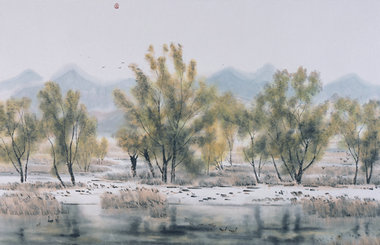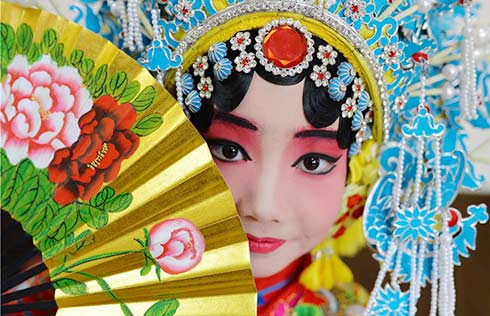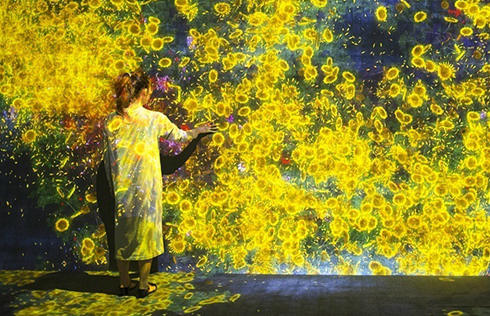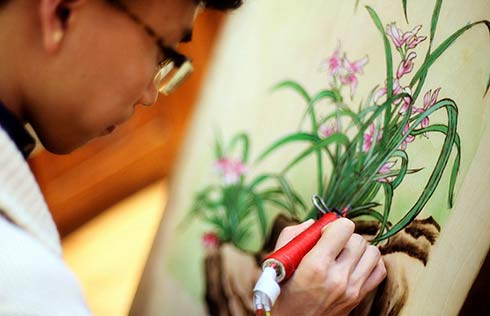

The following room showcased the quality and originality of European still-life paintings during the 17th century. The series closed with Andrea Belvedere's spectacular Vase of Flowers. An overwhelming population of flowers of various textures and lavish colors almost covers the entire surface of the canvas. This section also featured works by Spanish master Diego Velazquze.
The exhibition closed with five of Goya's creations, including his monumental The Parasol. Since visitors weren't permitted to photograph the actual painting, they snapped shots with the large promotional poster outside.
The display is the first presentation by a Spanish national museum in China. But compared to previous shows of classical Western art, NAMOC director Fan Di'an said that From Titian to Goya created a more powerful atmosphere than previous exhibitions.
"These might not be the best, but are at least the most representative works from the different schools of European art history," he said. "We now live in a time of hi-tech imagery. This exhibition offers people a rare chance to enter the spiritual world of classical art."
During the exhibition, the museum organized four lectures to help the public better understand the artistic developments the paintings reflect.
300% Spanish Design Exhibition

"300% Spanish Design Exhibition" was one of a series of exchange activities this year, the Year of Spanish Culture in China. On display were 100 chairs, 100 lamps and 100 posters. The exhibition stopped in Shanghai this summer and showed at Beijing through November 11th.
"300% Spanish Design" highlighted the best design from Spain over the past 100 years. It was a selection of individual pieces of great intrinsic value for their beauty, functionality, originality, daringness, and efficiency.
The exhibition offered a high-level overview with brilliant artistic moment reflected, which showed great creative liveliness. Some posters in the exhibit use as their theme basic commodities like rice, chocolate or wine. Others featured big events, like the Madrid World Cup or the Cultural Expo; or promoted avant-garde art activities. Themes may be similar, but in terms of design, each is unique.
Spanish design began in the aftermath of the European Industrial Revolution of the early 19th century, and with the Arts & Crafts Movement, initiated in England. A hundred years later the Spanish Modernism Movement, represented by master architect and art designer Antoni Gaudi, vaulted Spanish design art to a global level.
Cosmos Gaudi: Architecture, Geometry and Design
Cosmos Gaudi: Architecture, Geometry and Design, was the largest and most comprehensive exhibition of Gaudi's work to come to China and the first to fully capture the artistic vitality of both his architecture and interior design, exhibited at the Museum of Contemporary Art,Shanghai (MoCA Shanghai) this summer.



